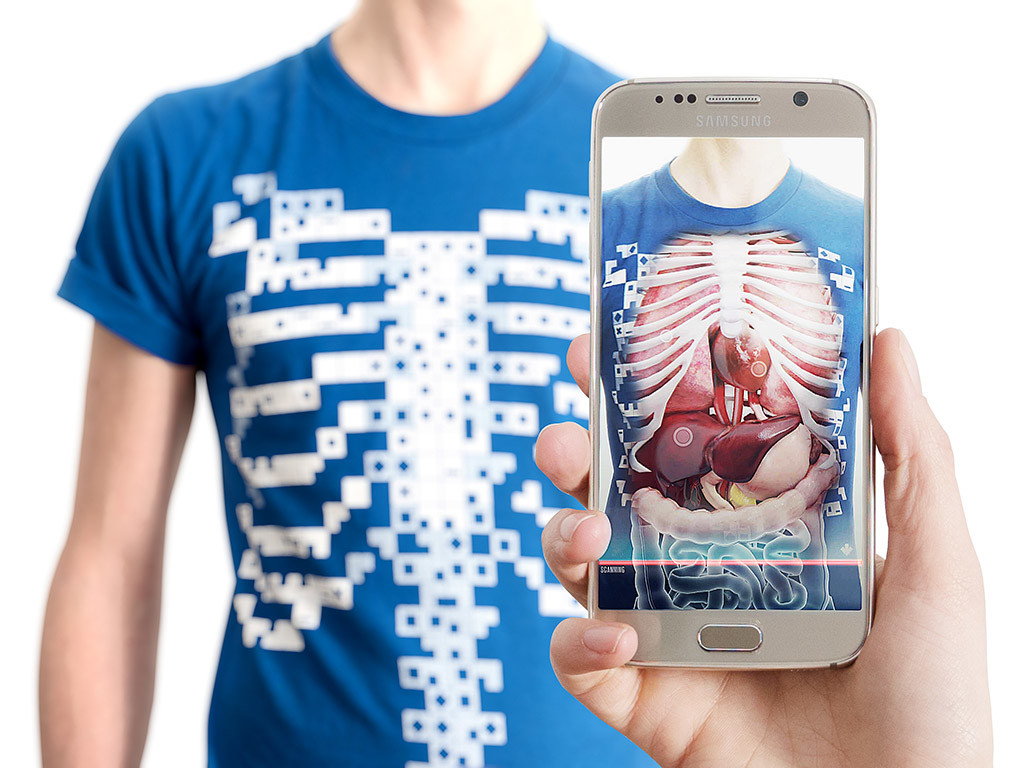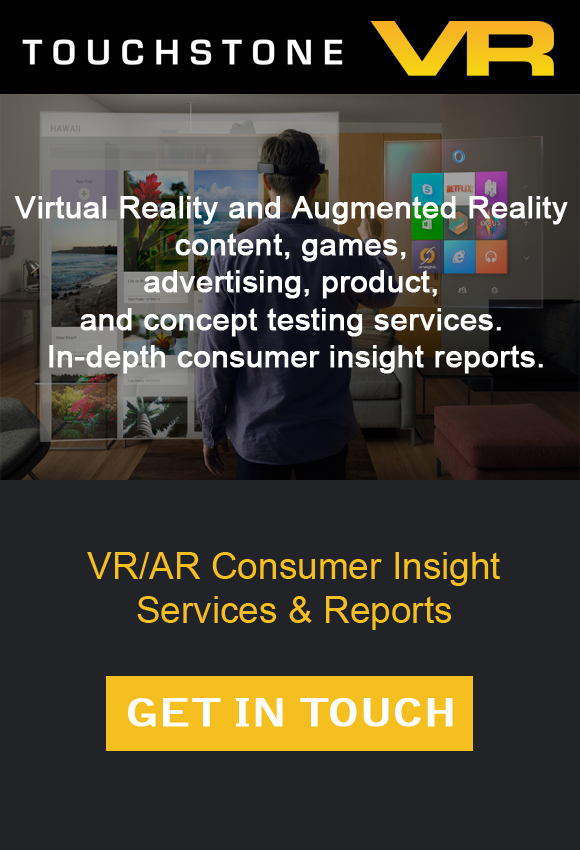List updated on 9/16/2016
Virtual Reality and Augmented Reality are new technologies which have been making all kinds of waves recently; but VR and AR are not only going to be used for gaming, several companies are exploring applications for VR and AR to be used in education. Around 90% of what we see and do is retained, which is something that has always been missing from education; students do not retain as much information if they are just reading a textbook compared to having more real applications of what they’re learning. Which is why VR and AR in education are so beneficial; these technologies engage students in a completely new way which is more fun and engaging for them, and it increases retention. Several companies are currently working on innovations in this space; and the work we’ve seen so far is surely a good sign of things to come.
Immersive VR Education
Lecture VR is a VR app by Immersive VR Education which simulates a lecture hall in virtual reality, while adding special effects which can’t be utilized in a traditional classroom setting. Lectures are accompanied by images, videos, and immersive experiences which enhance the lesson. Imagine learning about Apollo 11 and while the instructor is lecturing, they can transform the classroom to be inside the space shuttle which they’re lecturing about; adding much more to the lecture than would be traditionally possible. Another major asset of this type of learning is that students and professors can remote in from anywhere in the world, which makes education more accessible on a global level.
Unimersiv
Unimersiv is a VR learning platform which releases educational content on a monthly basis. The content in Unimersiv’s app is more individualized and immersive, and at the moment the 3 educational experiences available on the app are: Explore the International Space Station, Anatomy VR, and Learn about Stonehenge in Virtual Reality. The diversity in this content shows the true potential in the range of things we can learn by using VR in education; and it also shows that Unimersiv is dedicated to creating educational content on a wide range of topics, which makes their potential truly unlimited.
Google Expeditions Pioneer Program
Google is also making waves in the space of VR education with their exciting Expeditions Pioneer Program. The purpose of the program is for Expeditions teams from Google to visit schools around the world and provide everything teachers need to take their students on a journey anywhere; the team will also assist the teachers in setting up and utilizing this technology. The VR experiences are meant to be like a really cool field trip which teachers would ordinarily never be able to take their students on; whether it’s to an underwater coral reef, or into a city like Barcelona, the potential is truly limitless here. The way the app works is that the students and the teacher will see the same things and be in the same session, but the teacher will be able to lecture and highlight certain things which are relevant to the lesson.
Alchemy VR
Alchemy VR is creating immersive educational experiences on an impressive scale. The experiences on Alchemy VR are like a narrative being told to the user where they will get to see and experience a myriad of different things; one such example is exploring the Great Barrier Reef. What makes Alchemy VR standout in this space is their partnerships which contribute to the level of content they produce. Alchemy VR is partnered with Samsung, Google Expeditions, Sony, HTC, the Natural History Museum in London, and the Australian Museum in Sydney. Alchemy VR has actually made several projects for Google Expeditions and is set to release experiences on pyramids and the human body soon.
Discovery VR
Discovery has been telling stories like no one else for over 30 years; and now they are entering the modern era with their Discovery VR app. Some of your favorite content is available on the Discovery VR app, so you can experience some of your favorite Discovery shows in a whole new way. Discovery brining content to virtual reality is great for the space of education in virtual reality; Discovery has been creating educational content for years, they’re a household name and when people hear you can watch Deadliest Catch or Mythbusters in Virtual Reality it might just get more people interested in the potential applications of virtual reality for education.
zSpace
zSpace is unique in the space of education in VR because of the technology they’re using. zSpace feels that VR technology should not necessarily be so antisocial and one sided as everyone putting on their own headset. zSpace has monitors which are similar to the way 3D movies work, where a group of people use glasses which are similar in feel to 3D glasses; these glasses make the content come off the screen. Additionally zSpace users have a pen which they use in order to manipulate the stimulus as you can see below. zSpace currently has content available for STEM education, medical training, and more general math and science experiences.
Curiscope
Curiscope is a startup company focusing on education in VR, and their Virtual Tee is already turning heads. The way it works is that one person wears a t-shirt while another person with a smartphone launches the app and is able to learn about the human body in a unique way. This is a unique way to utilize AR in education and it is surely a sign of good things to come from Curiscope.

WoofbertVR
Woofbert VR is focusing on bringing art to VR technology, they are looking to reshape the landscape of storytelling and revolutionize the way we look at art and culture. WoofbertVR is a unique way to visit an art gallery, either individually or in a classroom setting giving students the opportunity to take a field trip which they would never normally get to experience. Exploring a gallery using WoffbertVR’s app is nearly identical to how you would explore it in person; you can follow any path you choose, zoom in on paintings you are interested in, and listen to audio segments on certain exhibits. The only difference here is that you do not need to take an expensive trip in order to visit a gallery which has some of your favorite paintings or pieces, now it can be done from the comfort of your own home.
Nearpod
Nearpod is an organization which combines VR and AR technology with traditional lesson plans in a classroom for a more immersive technology driven approach to learning. Nearpod utilizes 360 degree photos and videos in lesson plans, and also has something akin to a PowerPoint for students to use alongside the 360 photos and videos. There are also options to have students answer questions by typing into their laptop or tablet. Nearpod VR is giving us an idea of what a classroom of the future is going to look like, with lesson plans being enhanced with VR and AR technology and students being more engaged by using this new technology.
EON Reality
EON Reality is looking to change how teachers utilize technology in the classroom. Students and teachers can create blended learning environments with the EON Creator, which is an interactive tool that allows users to combine 3D content with videos, sound effects, notes, Powerpoint, and more. EON also has an EON Experience Portal where teachers and students can upload their work and also explore the creations of other teachers and students. There is also the EON Colliseum where students and teachers can meet virtually, which makes collaboration possible at any time and from nearly any location.
Schell Games
Schell Games is one of the largest independent game development companies in the United States; with their forte being in what they refer to as transformation games, or games that change people for the better. Among the countless games they have developed includes Water Bears VR, which is a VR puzzle game aimed at kids that promotes systems thinking and spatial recognition. There has always been a challenge in education with engaging students, especially kids, and making learning fun has always been a practical solution to that challenge. With companies like Schell Games producing fun VR games for kids, which have the added bonus of being educational, we find a fun solution to the challenge of getting kids interested in learning.
Gamar
Gamar is a company who is attempting to make museum visits more modern through the use of Augmented Reality. The way that Gamar’s content works is that they have interactive experiences and supplemental information which can be paired with certain locations to enhance museum visits. One of the chief rules of a museum is not to touch anything, but with Gamar’s app museum attendees will be able to point their smartphone or tablet at an exhibit at one of their paired locations and get additional information on that exhibit. Museum visits can be tedious for kids when all they want to do is pull out their smartphones and play with them. Gamar has provided a solution to this problem by finding a way to engage kids in museums and doing it in a way that’s interesting to them and on their level. AR and VR technology are great tools for education, but if we can’t get kids to use them then it’s all for not; which is why we need organizations like Gamar who find ways to get kids to utilize this technology in educational ways.
ThingLink
A unique take on 360 images has been developed for classroom use by ThingLink. The way that their technology works is that it allows teachers, or students, to annotate 360 images with various interactive tags, or links to different videos or applications or third party tools. Imagine being able to look at a 360 picture of London and click on various things throughout the picture, one tag might be a video enhancing something you are looking at, while another tag might be a writing assignment or a place to record notes. This kind of all in one learning experience will help in breakages in immersion which would typically occur in learning which utilizes VR or AR technology. If students do not have to look away from a 360 image in order to take notes or do an assignment then the immersion will never truly be broken. ThingLink’s technology encourages students and teachers to utilize AR in the classroom for a unique one stop experience, and it has the potential to shape adoption of VR and AR technology in the classroom on a broad scale due to its appeal to students and teachers alike, not just one or the other.
Virtual Reality and Augmented Reality are the next big step forward in education, and these technologies are good for educators and students alike. Educators will be able to capture the attention of their students like never before and get them more actively involved in the classroom. Students are always trying to do what’s cool and what’s new; utilizing VR and AR technology in classrooms will appeal to students because it’s the latest and greatest thing and it’s very cool to use. Using VR and AR technology will not only make learning more interesting and exciting to students but it will also increase retention because it engages them in a way which textbooks simply cannot compete with. These technologies give us a window into the future of education, and it probably won’t be long until it is standard for classrooms to come equipped with some form of VR or AR technology.




Hi, Drew!
Awesome list!
Definitely, AR and VR technologies will have a great impact on the education industry in future.
Hello:
I work for Schell Games. (http://www.schellgames.com). We’re one of the largest independent game developers in the country, and we focus on creating transformational games, or games that change people for the better. We have developed a large number of educational titles, including Water Bears VR, a virtual reality puzzle game that promotes systems thinking, color theory and spatial recognition. In addition, we have recently received an IES grant from the US Department of Education to develop SuperChem VR, a virtual reality game that helps students learn chemistry. http://ies.ed.gov/funding/grantsearch/details.asp?ID=1779
Our CEO Jesse Schell (http://www.jesseschell.com) is a 20+ year veteran of VR, having worked on many VR experiences as a Disney Imagineer and as a professor at Carnegie Mellon University’s Entertainment Technology Center.
I humbly request that you review our company’s credentials, and consider adding us to your impressive list.
Thank you,
Jill Sciulli
Hi Jill–you have been added. Thanks!
Most excellent!
I’m an instructional design/systems specialist and doctoral student who is very interested in ensuring that learning occurs within these learning environments and that the best of learning sciences/theories are incorporated. I’ve completed limited field research in this area this far. I appreciate this article because I have been trying to reach out to this community to see how I can bring my strong background and interest to support success.
I’d like to know if there are companies working on social stories and other effective programming to help students with anxiety disorders and communication disabilities ( including autism)?
I’d also like to know if the programs will come in different languages… A huge need in diverse, inner city schools.
Please contact me!!
Virtual Dreams Realidad Virtual con y sin casco.
the company makes educational systems with virtual reality in museums and schools
https://www.youtube.com/watch?v=qzPuu7ueges
Check out http://www.augthat.com. Hey have the largest content based augmented reality for education library.
Great insight but feel you’ve missed some great companies off this list 😉
Check out http://www.fieldtrip-vr.com they offer virtual reality education bundles for schools.
Augmented reality and virtual reality are the next major step in education. These technologies are great for students and teachers.
https://the-tech-trend.com/future/the-future-of-education-and-technology/
We are One Of The Metaverse Development Company In India Visit Us: https://www.metadiac.com/metaverse-development-company